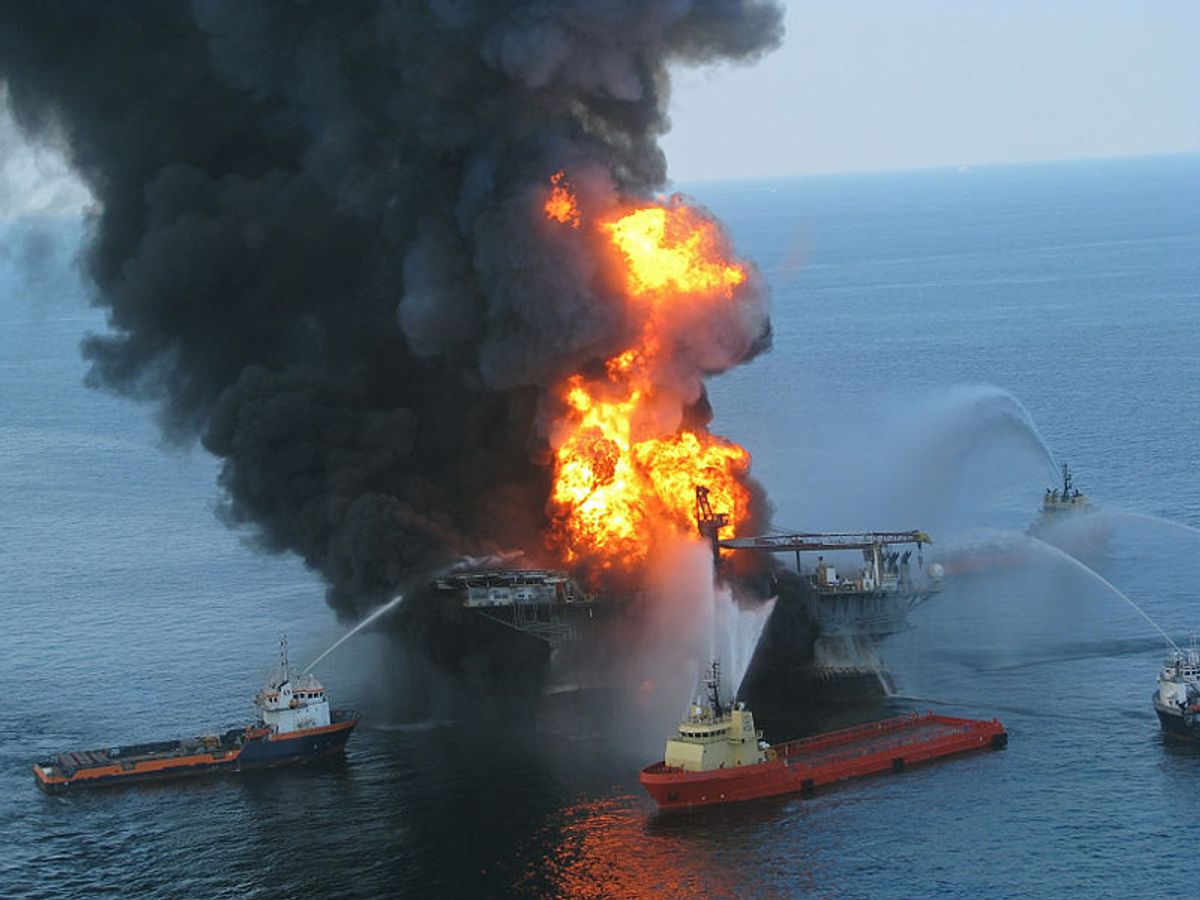Remember last week, when BP was patting itself on the back for its "unprecedented response" to a disaster of its own making, and assuring us all that, four years after its massive oil spill, the Gulf of Mexico is doing just fine?
Well, an estimated 80,000 to 620,000 barrels of oil still coating the bottom of the Gulf says that was bullshit.
This latest (certainly not the first) indication that the Deepwater Horizon catastrophe is far from over comes via geochemists at the University of California-Santa Barbara, who took a look at the 2 million or so barrels of BP oil gone missing in the spill's wake, and believed to have settled in the deep ocean. Their results, published Monday in the Proceedings of the National Academy of Sciences, estimate that somewhere between 4 and 31 percent of that oil has come to rest, splattered in drops and globs across some 1,235 square miles of seafloor.
“It’s a lot of oil," confirms lead author David Valentine. His team analyzed samples taken from 500 different locations around the busted Macondo well, and uncovered a pattern they described as a "bathub ring" roughly the size of Rhode Island; "a smokingly clear signal, like a bulls-eye" that circles the well, its obvious source.
"The evidence is becoming clear that oily particles were raining down around these deep sea corals," Valentine added, lending support to findings, hotly contested by BP, that they were damaged by the spill.
And that may not be the study's only "gotcha moment." As you may remember from science class, oil isn't supposed to sink in water. But among the Gulf's many unique features is that its microbes have evolved the ability to eat oil (BP cited that fun fact as one of the reasons why so much of the spilled oil appears to have gone away). It's possible, U.S. News reports, that enough microbes crowded onto the oil droplets to weigh them down, causing them to sink.
A remaining question is whether BP's highly controversial use of dispersants to break up the oil in the spill's immediate aftermath may have contributed to the problem. Critics see the cleanup method, which BP defends as standard, as part of the company's attempt to make things look less bad than they are; some suggested, back in 2010, that such attempts would only serve to worsen the spill's impact in the long-term.
If the dispersant made the oil drops smaller, Bagby explained in an email to Salon, it could account for the wide range of oil they discovered. But "the thing is, there's no control condition," she wrote. "We know how big the contamination footprint we observed is, and we know about how much oil has been found there. But is that the result of successful dispersant application (that is, the drops were smaller than they would have been otherwise, and that allowed them to spread this far), or of a failed dispersant application (that is, there wasn't a substantial or lasting change to the drop size, so the drops settled out where they would have in any case)? That's not something we've been able to address yet."
According to Valentine, the dispersant couldn't have caused the oil to come to rest on the seafloor. But it "certainly contributed to the oil that got stuck in the water of the deep ocean," some of which eventually found its way to the bottom. So there's still a lot to work out -- but at the very least, the authors said, the pattern they found is "fully consistent" with the spill (as opposed to natural oil seeps, BP's favorite scapegoat).
You're free to make what you will of BP's immediate dismissal of the study, which it claims "grossly overstate[s]" the amount and distribution of oil on the seafloor.
This post has been updated with comments from Sarah Bagby, and to clarify that she explicitly disavowed any predictions about the role of dispersant in this spill.

Shares